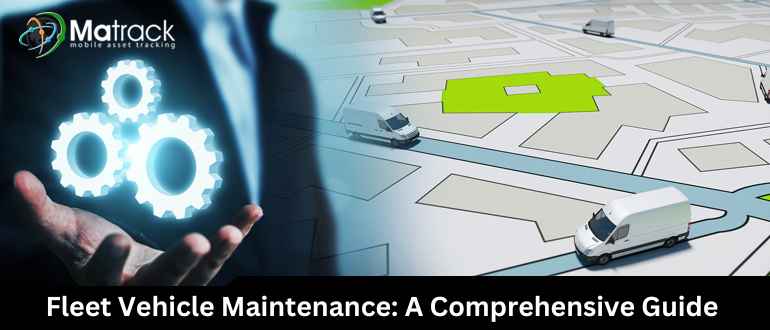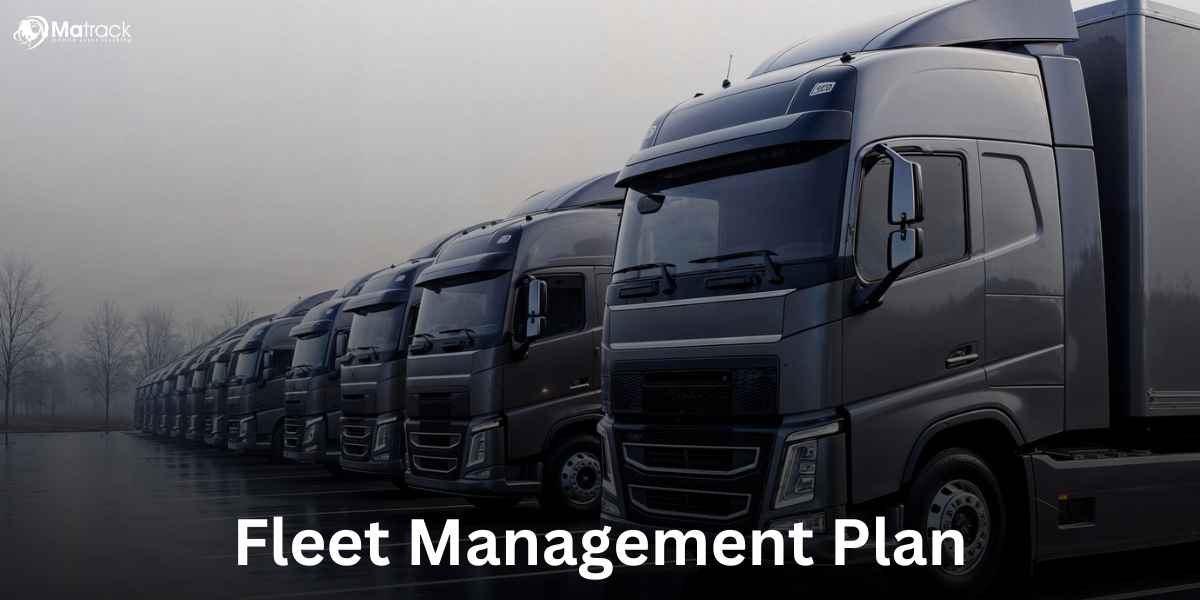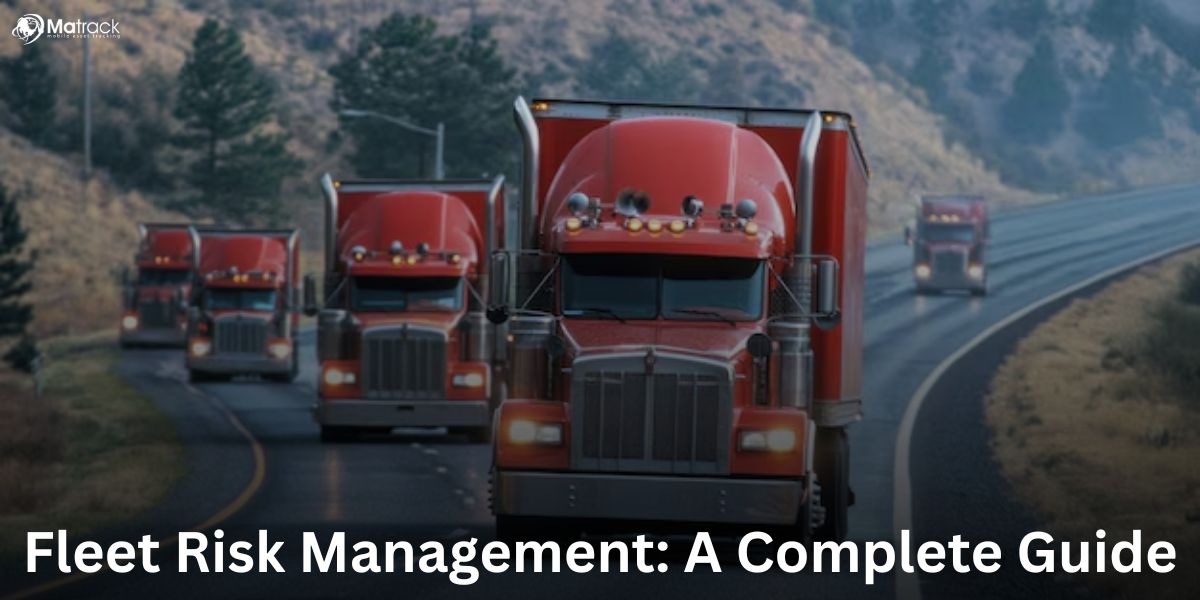Key Takeaways
- Fleet vehicle maintenance means keeping vehicles in good shape to make them safe, reliable, and efficient.
- Preventive and predictive maintenance help avoid breakdowns, save money, and extend vehicle life.
- Telematics tools give real-time updates on vehicle health and driver habits to improve maintenance.
- Keeping records and using software makes it easy to plan maintenance and stay compliant with rules.
What is Fleet Vehicle Maintenance?
Fleet vehicle maintenance is the systematic care and servicing of fleet vehicles to ensure they operate efficiently, reliably, and safely.
Whether a small delivery van or a broad array of trucks and heavy equipment, proper maintenance ensures reliability, extends the vehicle’s life, and helps minimize operating costs.
Core Components of Fleet Vehicle Maintenance
Preventive Maintenance
Preventive maintenance includes scheduled services such as oil changes, brake inspections, and tire rotations.
This process guarantees, based on vehicle type, mileage, or hours of operation, that components remain within optimal condition, preventing the need for breakdown maintenance and expensive repairs. Know more about preventative maintenance for semi-trucks.
Predictive Maintenance
Predictive Maintenance uses data analysis to anticipate the malfunction and visually predict the failure of other parts. Technology like Sensors, telematics devices, and diagnostic software are used.
Corrective Maintenance
Corrective Maintenance is the implementation of immediate required Maintenance due to vehicle breakdown or vehicles being involved in an accident.
This would be commonly viewed as a reactive operation; however, getting a vehicle back to working after an issue occurs.
Steps to Build an Effective Fleet Maintenance Program
Create a Comprehensive Maintenance Policy
Maintenance policies help ensure accountability and uniformity in the management of the fleet vehicle, and these policies should properly outline the servicing, inspections, and repairs that need to be performed regarding the fleet’s requirements.
Also, the policy should cover compliance with certain regulations such as DOT or OSHA. Above compliance is beneficial because it minimizes risks, promotes safety in all operations, and prevents penalties from being imposed. Source: FMCSA
Maintain Detailed Vehicle Records
The maintenance records for the fleet vehicles must be properly maintained. This helps track operational costs and identify trends & patterns in cost management.
The automation of record management enables the complete data to be stored in one place, which assists fleet managers in making the right decisions regarding repairing, replacing, or upgrading any vehicle within the fleet.
Use Fleet Management Software
Fleet vehicle management Software is important for scheduling and automating maintenance tasks. It helps send service-required notifications, organizes the history of repairs, and monitors vehicles’ operational metrics.
Brands such as Matrack offer real-time data and notifications. These solutions streamline response times and minimize downtime from missed maintenance activities.
Conduct Regular Inspections
Daily inspections help recognize simpler problems before they become a significant expense. Important events to check include brakes, tires, lights, and fluid levels.
There is a need for a formal checklist to be prepared in the form of a standard, and both drivers and technicians should adhere to that during inspections, which minimizes the chances of negligence.
Train Drivers on Maintenance Best Practices
It is generally known that drivers are the first ones to notice when something is not right with the vehicle; it is important to teach them how to conduct basic inspections, like calling for details when tire pressure is low or when an unusual sound is coming from the vehicle.
Providing drivers with such information ensures that there would be fewer chances of misusing the vehicle, which will increase the fleet vehicle’s reliability and safety.
Leverage Telematics for Real-Time Insights
Telematics systems provide real-time data on vehicle performance and usage while also helping vehicle fleet managers with low tire pressure or faulty engines by sending alerts.
These telematics systems integrate predictive and real-time analytics, which help schedule maintenance, thus reducing downtime and increasing overall fleet performance. Read about what is telematics?
Common Challenges in Fleet vehicle Maintenance and How to Overcome Them
High Maintenance Costs
Maintenance of a fleet vehicle can be on the pricier side, more so for big-scale operations with multiple vehicles.
Expenses can rise fast if one chooses only to have corrective repairs or if minor issues are left unattended until they become bigger.
To efficiently manage your expenses, consider preventive and predictive maintenance strategies first; these strategies are low cost, minimize the chances of breakdown, and lengthen the life of vehicles, lowering overall costs in the long run.
Unscheduled Downtime
Unscheduled downtime can impact the functioning of operations and the timing of deliveries or cause hassles to clients.
At the same time, too much downtime can disrupt order schedules or require on-call repairs, increasing the overall maintenance cost.
Use telematics to track how vehicles operate to diagnose problems in good time. Updates like real-time notifications and analytics can allow vehicle fleet managers to repair and avoid downtime.
Compliance Issues
Negligence of safety and regulatory requirements can lead to risk penalties, fines, or legal action. Regulations such as FMCSA requirements demand organizing documents and vehicle maintenance over a set period.
Regular audits and inspections must be conducted to ensure the equipment is in proper working order and to remain current with applicable regulations.
Vehicle Fleet management systems monitor compliance and periodically inspect the vehicles to track compliance and consistently ensure that vehicles meet all safety standards.
Benefits of a Well-Maintained Fleet Vehicle
Increased Uptime
Proper maintenance reduces unexpected breakdowns, thus ensuring that vehicles are fully functional and delays are minimal. This makes it easier to comply with delivery deadlines, boosts productivity, and increases the satisfaction of customers.
Lower Total Cost of Ownership (TCO)
Routine maintenance allows small issues to be handled before becoming more significant. It also helps enhance fuel efficiency and ease the vehicle’s operational cost.
Improved Safety
Regular servicing guarantees that brakes, tires, and other important systems work efficiently, minimizing the chances of an accident. Following safety regulations reduces the risk of legal problems and helps protect the company’s reputation.
The Role of Telematics in Fleet Maintenance
Real-Time Diagnostics
Telematics systems allow real-time alerts of engine failure, low fluid supply, and low tire pressure. Such alerts enable vehicle fleet managers to carry out maintenance promptly, thus preventing breakdowns and expensive repairs.
Predictive Analytics
Because of telematics, it is possible to prevent breakdowns by predicting failures, allowing for maintenance scheduling in advance. This will cut down breakdowns and downtime.
Electronic logging devices allow for accurate tracking of vehicle growth. ELDs give detailed information about engine hours and vehicle usage, helping managers schedule maintenance based on actual wear and tear.
Telematics can customize maintenance requirements for vehicles working in harsh environments, such as during rain, extremely hot, or extremely cold weather. Such vehicles can provide dependable services while extending their vehicle’s life.
Driver Behavior Monitoring
Telematics offers metrics on driving patterns such as harsh braking, acceleration, and prolonged idling, which impact the wear and tear of the vehicle. Managers can leverage such information to influence or coach drivers and minimize excessive vehicle destruction.
Fleet dash cam enhance accountability by capturing video evidence of events flagged by telematics systems, such as harsh braking, rapid acceleration, or collisions.
GPS Fleet Tracking and Maintenance Integration
Combining GPS fleet tracking with telematics gives a complete picture of fleet operations. Managers can plan better routes and track vehicle locations in real time, saving fuel and reducing vehicle wear.
GPS tracking also helps with maintenance by connecting how vehicles are used with their performance. For example, vehicles in tough conditions can get more frequent servicing to avoid damage.
Conclusion
Proper vehicle fleet maintenance keeps vehicles reliable, safe, and cost-effective. Using preventive care, telematics, and following regulations helps reduce downtime, lower costs, and improve performance. A well-maintained fleet ensures smooth operations and happy customers.






